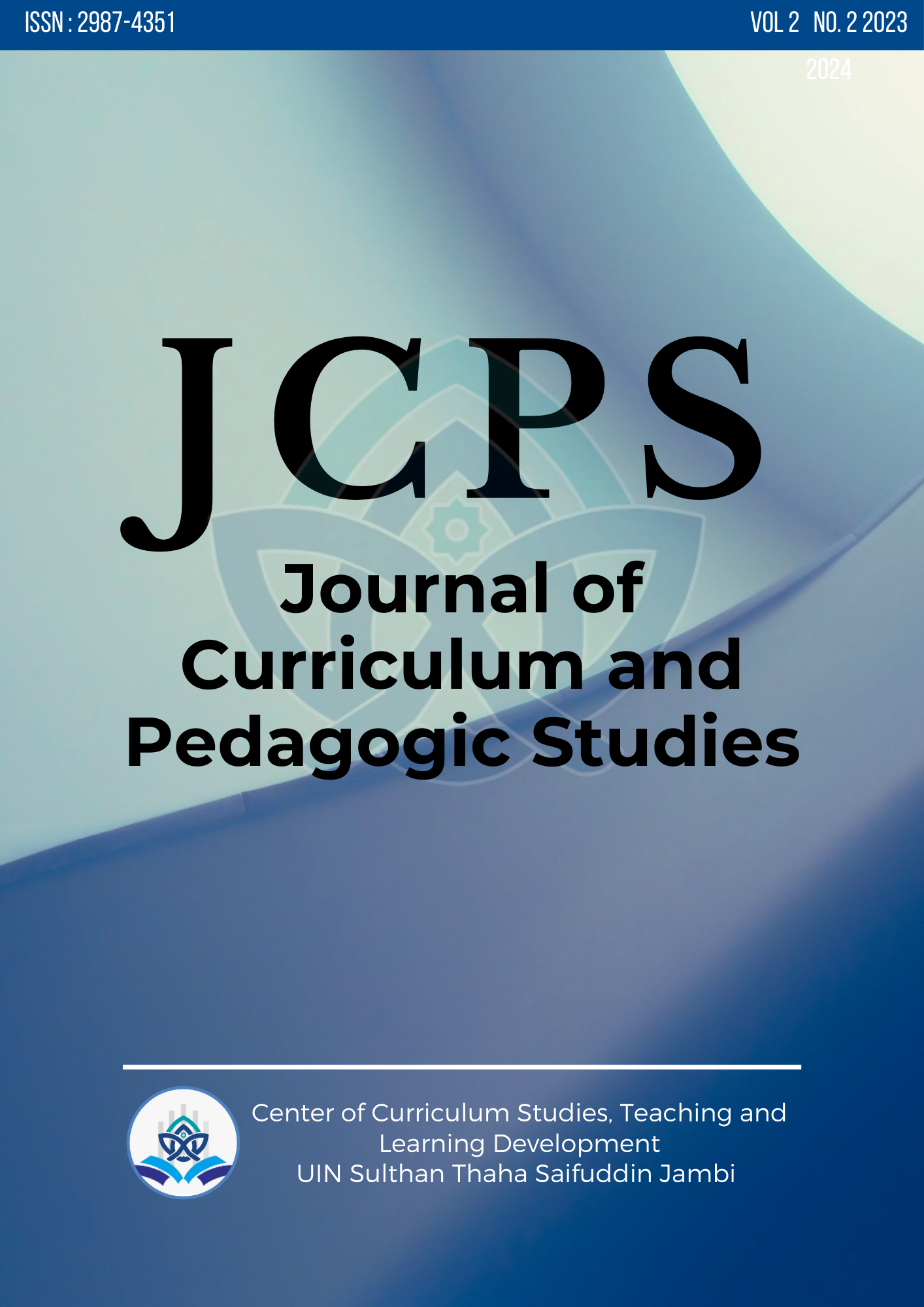Optimizing Student Admissions: Case Study of Integrated Islamic Private High School An-Nahl, Percikan Iman Jambi
DOI:
https://doi.org/10.30631/jcps.v2i2.2234Keywords:
Management, Admissions of students, Integrated Islamic SchoolAbstract
This research aims to delineate the principal's strategic endeavors to enhance the student enrollment process at An-Nahl Percikan Iman Integrated Islamic Junior High School in Jambi. Employing a qualitative descriptive approach, data were gathered via observation, interviews, and documentation techniques. The analysis involved data reduction, presentation, and drawing conclu,;/.;sive insights. The findings reveal several key aspects: Firstly, student admissions at An-Nahl Percikan Iman Jambi Integrated Islamic Middle School are conducted both offline and online. Secondly, the management of admissions involves comprehensive planning, committee formation, criteria establishment, and varied promotional activities encompassing flyers, brochures, banners, billboards, and the setup of PPDB stands. Preparation entails facility administration, oral and written testing, implementation of activities such as BKA initiatives, school networking, parent engagement, and community outreach. Evaluation encompasses offline and online registration processes, emphasizing parent interviews crucial for fostering a conducive learning environment, culminating in student graduation announcements. Thirdly, the school principal fosters improvements in the admissions system through intensified communication with educators and stakeholders.
References
Hadari Nawawi & Mimi Martini ( 1996 ). Penelitian Terapan, (Yogyakarta : Gajah Mada University Press), 73.
Imam Bawani( 2016 ). Metodologi Penelitian Pendidikan Islam. (Sidoarjo : Khazanah Ilmu Sidoarjo), 35-37.
M. Djunaidi Ghony & Fauzan Al Manshur ( 2017 ). Metode Penelitian Kualitatif. (Yogyakarta : Ar-Ruzz Media), 25.
Purwanti, D., Irawati, I., Adiwisastra, J., & Bekti, H. (2019). Implementasi Kebijakan Penerimaan Peserta Didik Baru Berdasarkan Sistem Zonasi di Kota Bandung. Jurnal Governasi, 5(1), 12–23.
Baharuddin, B., Sugiarti, D. Y., Aryanti, D., Rajiah, S., Nurhaeni, N., & Burhan, B. (2020). Manajemen Penerimaan Peserta Didik Baru di SDIT Ki Hajar Dewantoro Kecamatan Tambun Selatan Kabupaten Bekasi. Journal Of Administration and Educational Management (ALIGNMENT), 3(1), 27–36. https://doi.org/10.31539/alignment.v3i1.1274
Emmett Grames. (2020). Strategi Kepala Sekolah Dalam Meningkatkan Penerimaan Peserta Didik Baru Smk Syntax Business School (Sbs) Kuningan. 2(2), 14.
Guanabara, E., Ltda, K., Guanabara, E., & Ltda, K. (n.d.). Konsep Manajemen Pendidikan Islam Perspektif Al-Qur'an. 100–120.
Istriyani, W., & Satyarini, M. D. (2021). Manajemen Penerimaan Peserta Didik Baru di SMK Sultan Trenggono Gunungpati Semarang. Journal of Economic Education and Entrepreneurship, 2(1), 38. https://doi.org/10.31331/jeee.v2i1.1677
Puspita, K., Alkhalifi, Y., & Basri, H. (2021). Rancang Bangun Sistem Informasi Penerimaan Peserta Didik Baru Berbasis Website Dengan Metode Spiral. Paradigma - Jurnal Komputer Dan Informatika, 23(1), 35–42. https://doi.org/10.31294/p.v23i1.10434
Rohmah, S., Wahyudi, W., & Pamungkas, F. (2020). Pengelolaan Penerimaan Peserta Didik Baru (PPDB) Berdasarkan Sistem Zonasi di SMP Negeri 1 Mlonggo Jepara. In Jawda: Journal of Islamic Education Management (Vol. 1, Issue 1, p. 25). https://doi.org/10.21580/jawda.v1i1.2020.6704
UUD RI RI No. 41. (2003). Presiden republik indonesia. Peraturan Pemerintah Republik Indonesia Nomor 26 Tahun 1985 Tentang Jalan, 1, 1–5.
Downloads
Published
Issue
Section
License
Copyright (c) 2024 Surya Anita, Suci Fitriani

This work is licensed under a Creative Commons Attribution-NonCommercial-ShareAlike 4.0 International License.
Journal of Curriculum and Pedagogic Studies (JCPS) is published under the terms of Creative Commons Attribution 4.0 International License / Attribution - Non Commercial-Share Alike 4.0 International (CC BY-NC-SA 4.0) This license permits anyone to copy and redistribute this material in any form or format, compose, modify and obtain these materials for any purpose, as long as they give credit to the author for the original copyright.











